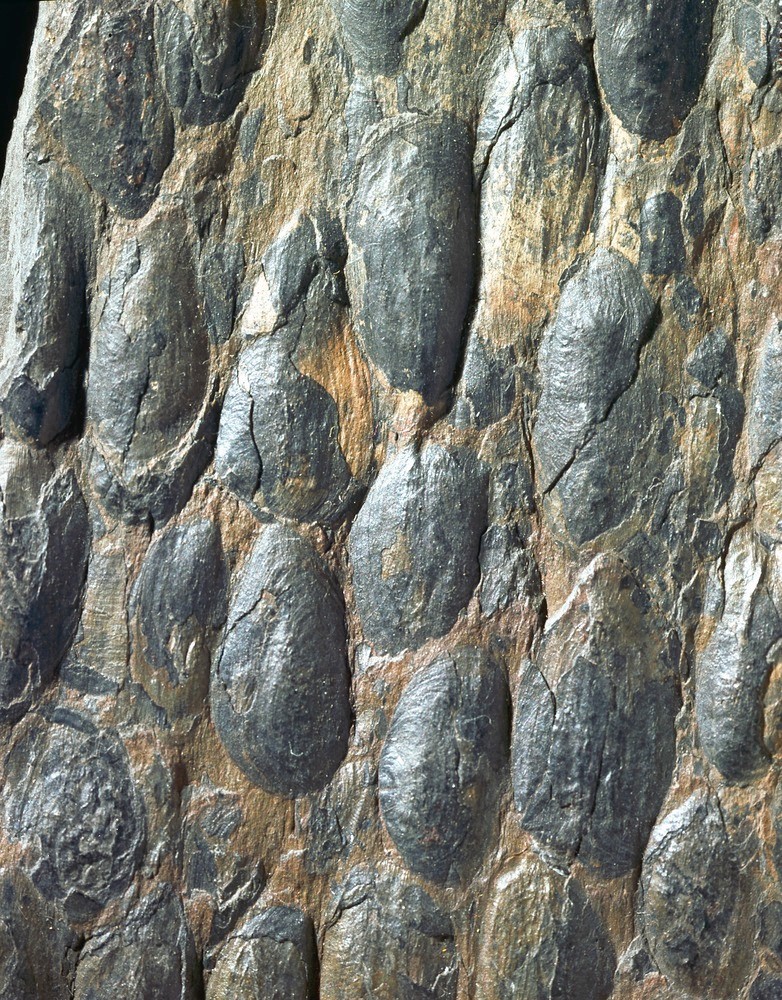| P number: | P549568 |
|---|---|
| Caption: | Lingulella, a Cambrian brachiopod. |
| Description: | Lingulella is one of the earliest brachiopods that has survived virtually unchanged since the Cambrian times (545 million years ago). Unlike most brachiopods, it successfully lives in brackish water and is found on tidal mud flats. It uses its pedicle to move up and down the vertical burrow in which it lives. Lingulella is one of the more primitive brachiopods and has a small shell that was originally made of calcium phosphate. The valves are elongate and lack ornament, although growth lines can be seen. Dozens of Lingulella may be found grouped together, such as shown here, and both pedicle and brachial valves can be seen. Brachiopods have a very long history. The oldest species lived during the earliest Cambrian time (545 million years ago) although strange animals that look like worms, but with a brachiopod-like shells each end suggest they evolved during the late Precambrian. They were particularly commmon during the Palaeozoic times (248 to 545 million years ago), but today they are rather rare. These animals are almost entirely marine, although some live in brackish waters. They have a shell usually attached to a firm substrate like a rock, by a pedicle, a fleshy stalk that extends out of an opening in one of the valves (the pedicle valve). The two valves are hinged so that they can be opened to allow water and food particles to wash through. Calcareous supports for the internal organs are sometimes preserved in fossils. |
| Photographer: | Unknown |
| Copyright statement: | Unknown |
| Orientation: | Portrait |
| Size: | 667.50 KB; 782 x 1000 pixels; 66 x 85 mm (print at 300 DPI); 207 x 265 mm (screen at 96 DPI); |
| Average Rating: | Not yet rated |
| Categories: | Best of BGS Images/ Fossils |
Reviews
There is currently no feedback

